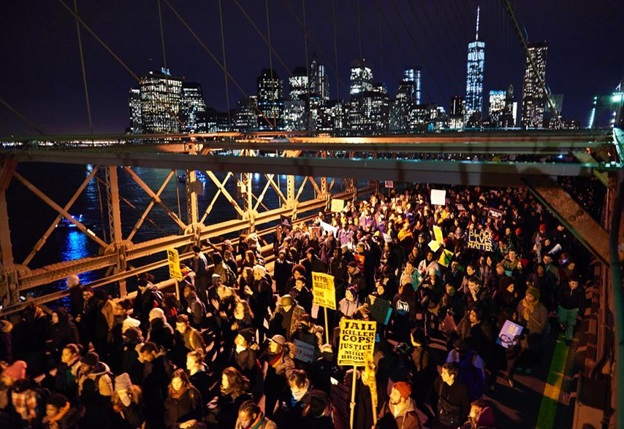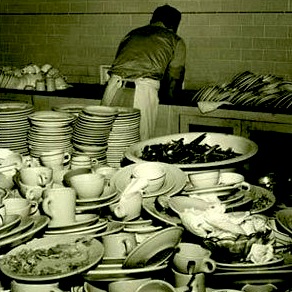In the recent debate over the legacy of Marxist-Feminism, Eve and Tyler presented a critique of Nat Winn’s use of the infamous ‘base and superstructure’ meme. Despite its wide usage, this particular set of categories has lead to deterministic theorizing, often gutting the subjectivity of the working class and oppressed from communist praxis. Underlying this political consequence has been the method of isolating the objects of investigation — in this case the forms of activity of the class. As Eve and Tyler explained, the ‘base and superstructure’ meme establishes a duality between subject and object, rather than theoretically explaining their dialectical unity. Simply put, the working class, no longer the creators of the social world — in this case capital — become helplessly determined by it, and communists thus abandon the concept of “coincidence of the changing of circumstances and of human activity or self-changing” as central to any revolutionary process.
In an effort to deepen and expand this conversation, we offer Raymond Williams’ essay, “Base and Superstructure in Marxist Cultural Theory” (pdf). In this essay (later expanded into a whole book) Williams takes up the common ways in which the categories of base and superstructure are used, and challenges his readers to, instead of considering isolated objects — in this case objects of art since Williams was a cultural critic — investigate the objective parameters and social relations of the activity behind the production of those objects. Part of this challenge requires us to consider the interrelation of all social practices (their “totality”) as opposed to considering one set, whether deemed “political” or “economic”, a part from another, and even more, to do so would require us to understand each of these particular sets as different forms of an active (or “moving”) social process.
This contribution to the discussion shares important features with Marx’s explanation of the fetish, which he begins in chapter one of the first volume of Capital. There, Marx demonstrates that modes of thought which treat objects in isolation of their historical development are a product of the organization of capitalist society. In this way, capitalist society understands itself to be timeless — a natural condition of the human race. One of the important contributions of Marx, then, is that he provided a critical theory that pierced through capital’s veneer of being natural, allowing us to understand the ways in which our activities and those of the rest of the working class can be equally critical, destroying capital in practice as well as in theory. As a new generation of communists, we must continue to wrestle with the difficult tasks of theory and method in order to play our part in creating a better world.
-Mazin
Base and Superstructure in Marxist Cultural Theory
by Raymond Williams
Any modern approach to a Marxist theory of culture must begin by considering the proposition of a determining base and a determined superstructure. From a strictly theoretical point of view this is not, in fact, where we might choose to begin.[1] It would be in many ways preferable if we could begin from a proposition which originally was equally central, equally authentic: namely the proposition that social being determines consciousness. It is not that the two propositions necessarily deny each other or are in contradiction. But the proposition of base and superstructure, with its figurative element, with its suggestion of a definite and fixed spatial relationship, constitutes, at least in certain hands, a very specialized and at times unacceptable version of the other proposition. Yet in the transition from Marx to Marxism, and in the development of mainstream Marxism itself, the proposition of the determining base and the determined superstructure has been commonly held to be the key to Marxist cultural analysis.
Now it is important, as we try to analyse this proposition, to be aware that the term of relationship which is involved, that is to say ‘determines’, is of great linguistic and real complexity. The language of determination and even more of determinism was inherited from idealist and especially theological accounts of the world and man. It is significant that it is in one of his familiar inversions, his contradictions of received propositions, that Marx uses the word ‘determines’. He is opposing an ideology that had been insistent on the power of certain forces outside man, or, in its secular version, on an abstract determining consciousness. Marx’s own proposition explicitly denies this, and puts the origin of determination in men’s own activities. Nevertheless, the particular history and continuity of the term serves to remind us that there are, within ordinary use—–and this is true of most of the major European languages—–quite different possible meanings and implications of the word ‘determine’. There is, on the one hand, from its theological inheritance, the notion of an external cause which totally predicts or prefigures, indeed totally controls a subsequent activity. But there is also, from the experience of social practice, a notion of determination as setting limits, exerting pressures.
Now there is clearly a difference between a process of setting limits and exerting pressures, whether by some external force or by the internal laws of a particular development, and that other process in which a subsequent content is essentially prefigured, predicted and controlled by a pre-existing external force. Yet it is fair to say, looking at many applications of Marxist cultural analysis, that it is the second sense, the notion of prefiguration, prediction or control, which has often explicitly or implicitly been used.




